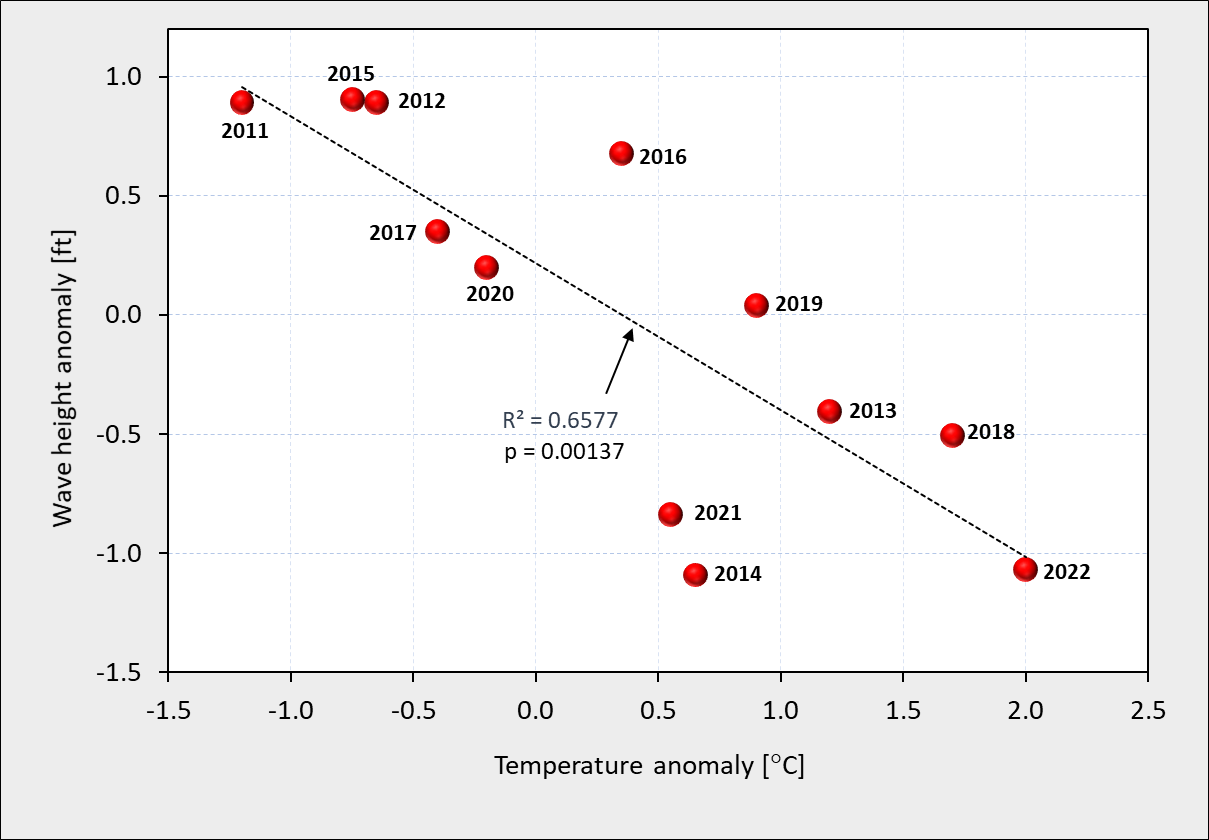Skip to first unread message
Graham Easterling
Aug 19, 2022, 4:35:05 AM8/19/22
to Weather and Climate
Up until the last decade or so, hot summers have basically been associated with a blocked situation with depressions stuck in mid Atlantic, so some good surf, not rough seas, just a decent long period clean swell. It seems that is no longer the case, there's been nothing much happening in mid Atlantic.

To demonstrate this this graph has just appeared on MagicSeaweed

The mean Summer temperature anomaly is from Camborne, the Summer wave height anomaly from Fistral, Newquay.
So depressions clearly aren't getting stuck in mid Atlantic, it would appear there is a split going on, with depressions tracking, generally further north than normal. A split in the jet stream perhaps, down to less ice in the Arctic?
Graham
Penzance
Len
Aug 19, 2022, 5:27:54 AM8/19/22
to Weather and Climate
Very interesting but rather a short time frame.
I am not sure what you mean by depressions stuck in mid Atlantic. They are just being steered around a stationary
atmospheric longwave Rossby type pattern.
Decadal variations in the longterm, embedded in the warming, are quite noticeable in temperature data for mid latitudes.
How these show in wave height at Fistral though I am not sure.
Is the hemispheric circulation becoming less vigorous with global warming? With more stationary patterns?
You have a point about the reduction in Arctic ice through the decade. It is bound to have some sort of influence on the occasional stationary longwave
hemispheric pattern which happens to give a block over our part of the N Atlantic.
Len
Wembury
Graham Easterling
Aug 19, 2022, 7:08:51 AM8/19/22
to Weather and Climate
I think what I meant by 'depressions stuck in mid Atlantic' was the fact that earlier hot Summers (including 1976 if I remember rightly, I haven't checked) tended to have a more S-SSE flow, with fairly persistent lower pressure to the west. This year the high pressure had, generally speaking, a more E - W orientation, extending well into the Atlantic.
Obviously the chart does have limitations & needs some further investigation. A study of the synoptic charts during the main heatwaves of the last 50 years for example. Nevertheless, certainly interesting.
Graham
Reply all
Reply to author
Forward
0 new messages
